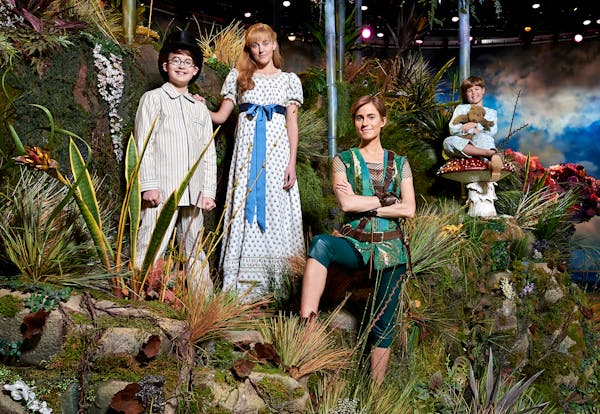"Peter Pan" by J.M. Barrie is a story that continues to inspire and engage audiences 100 years after its publication. For this reason, its limited and outdated representations of Native Americans may seem forgivable, even benign.
It is not. It is racist.
To say otherwise is to deny that stories have power. When we tell stories, we are making the world. "Peter Pan" is a powerful, enduring story deeply embedded in our mainstream cultural consciousness. So what is our responsibility as a theater company when we produce classic stories, parts of which are offensive?
When we decided to program "Peter Pan the Musical," we knew that we could not portray Tiger Lily and the "Indians" of Neverland as Barrie, Disney or Broadway had. Although Barrie may have considered his portrayal of Native Americans to be positive, he lived in a time dominated by British colonialist ideals that were rife with racial stereotypes. Many offensive elements exist in the original, including the use of words such as "redskin," as well as dialogue spoken in broken English. The "Indians" in "Peter Pan" not only bear no resemblance to Native people, they also exist alongside imagined creatures such as mermaids and fairies, which in turn casts them as fictitious characters. While this does not invalidate the story's core beauty and power, it does marginalize and disrespect Native Americans, something that Children's Theatre Company refuses to perpetuate.
So why put "Peter Pan" on our stage at all? The fact is that despite its insensitive material, "Peter Pan" does contain positive messages worth sharing with today's audiences. It beautifully captures the spirit of flight, adventure, imagination and what it means to grow up — something we believe is reason enough to continue to tell this story. Any artistic process is an act of interpretation and to some extent a re-imagining of the original material. In telling "Peter Pan" on our stage for today's audiences, our responsibility lies in telling it in the most respectful way possible while maintaining the beauty that has enchanted us for a century.
In order to do this, we connected with local and national Native artists and educators, as well as Native members of CTC staff and board to gather a multiplicity of viewpoints and responses to our proposed artistic solutions. This significant and generous input within a series of community conversations revealed the depth of harmful and problematic elements in the original material. We ultimately concluded that the success of our version depended on eliminating hurtful stereotypes and not depicting Native Americans alongside imagined creatures.
In our version of "Peter Pan," we re-imagine Tiger Lily as the leader of a group of powerful young women, a counterpart to the Lost Boys. Tiger Lily will keep her name, which has never had a connection to authentic Native American culture. One of the core ideas of "Peter Pan" is that children have the power to enact real change, independent of adult intervention. Our version expresses that theme more clearly, pairing the group of young women with the Lost Boys to defeat Captain Hook and his pirates.
We know classic texts can pose challenges. It is our job to look at every story we program and bring out the essential messages for our audiences in a way that honors and welcomes all families. When we make theater, we explore how the world should be and how it should function. A play can bring together a group of strangers — different in age, class, race and gender — to share in something beautiful, something larger than any individual. That is the power of theater. That is the power of story.
Peter Brosius is artistic director of the Children's Theatre.
In heated western Minn. GOP congressional primary, outsiders challenging incumbent

Minnesota Sports Hall of Fame: A class-by-class list of all members

This retired journalist changed professional wrestling from Mankato

